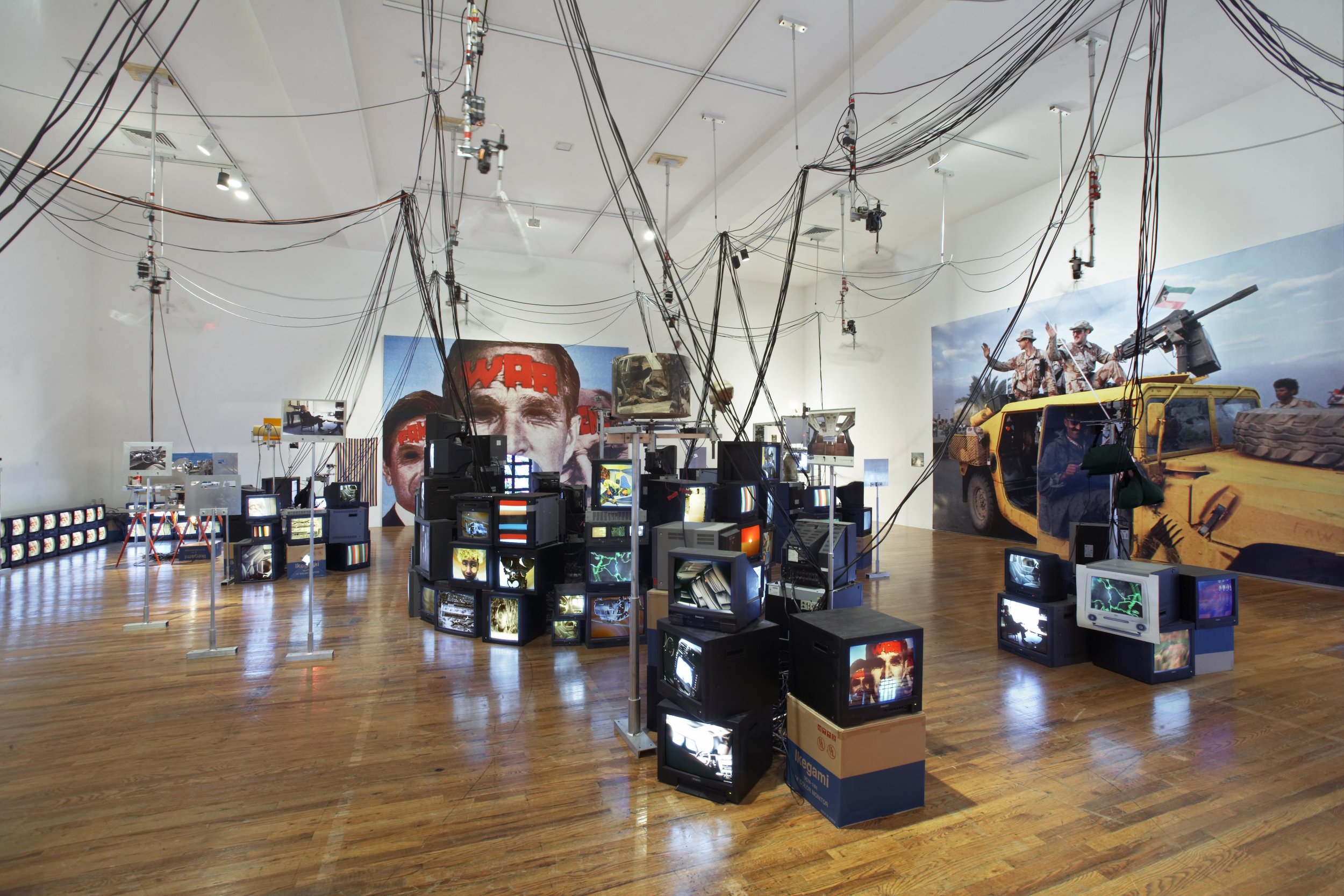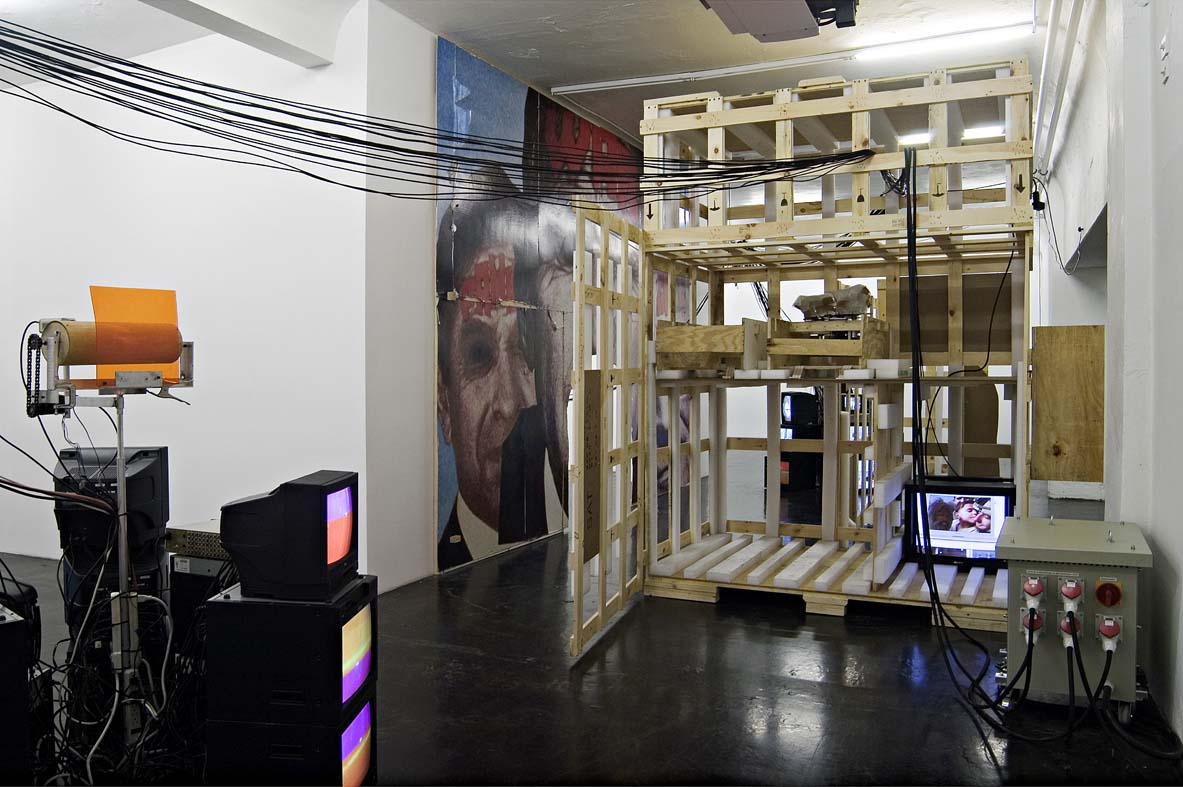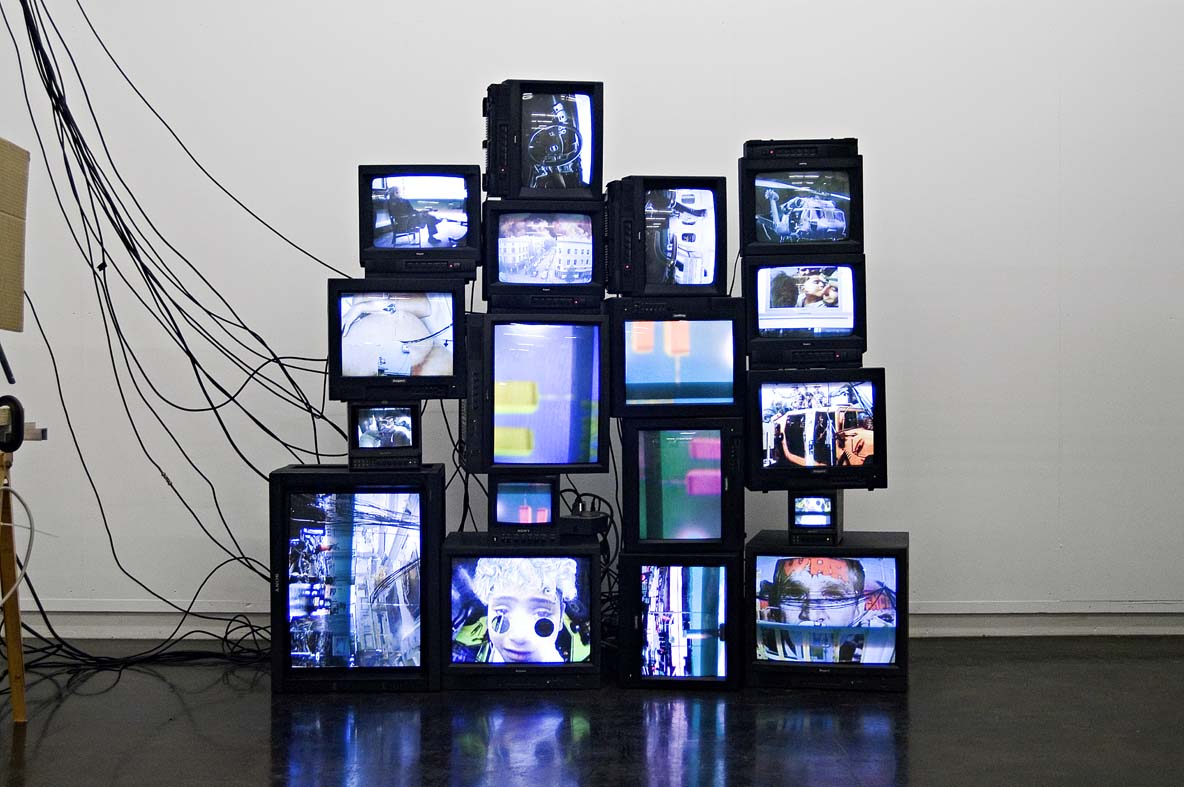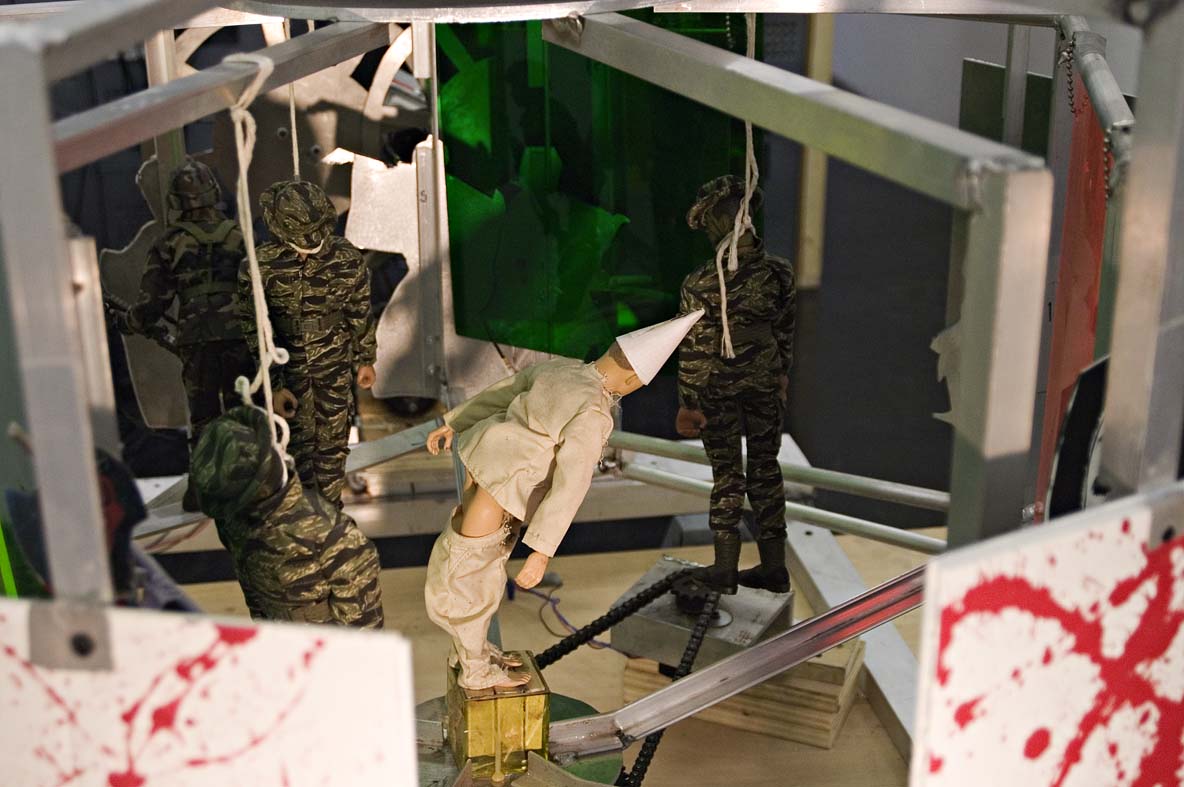The Palace at 4 A.M.
The Palace at 4 A.M. was Kessler’s first immersive video mechanical installation an it formalized many of the technical and aesthetic decisions which have remained consistent to this day. Originally shown at PS1/MoMA in 2005, the piece is permanently installed at the Sammlung Falckenberg in Hamburg, Germany.
Referencing the 1932 Alberto Giacometti sculpture of the same name, the installation’s title meant to evoke, in the artist’s words, “the insanity that happened in Saddam’s palaces and prisons at that hour when no one was watching.”
60 Mechanical sculptures, 300 video monitors and 6 miles of cable came together to form the piece that Kessler calls his Apocalypse Now, his trip up the river- trying to make sense of the insanity of war. The piece connects the dots of 9/11, the Bush election of 2000, Homeland Security, the hunt for weapons of mass destruction, the invasion of Iraq, Abu Ghraib and the capture of Saddam Hussein. The last sculpture added to the installation was The Flood, a reference to the tragedy of Hurricane Katrina.
One of the tenets of Kessler’s practice is his uncompromising exposure of the apparatuses used to produce his imagery. The wires, gears, cameras, and motors that “fuel” his devices are always visible and in large part constitute the bodies of the works themselves, exploding accepted notions of inner and outer, of what is seen and what is unseen. Though the physical structure of sprawling installation is seemingly demystified, we nevertheless remain compelled to question the enigma of the image. The Palace at 4 A.M. implicates the viewer, casting them as spectator and performer….voyeur and exhibitionist.
The centerpiece of the installation is the sculpture One Hour Photo, a contraption based on a film developing machine and the first of Kessler’s pieces to integrate video surveillance. Unable to get the image of what the terrorists would have seen from the cockpit out of his head he decided to simulate it using postcards of the Twin Towers and a tiny surveillance camera. The introduction of video sent the work into a completely different direction- one more politically and socially charged.
Every image included in The Palace at 4 A.M. comes from the internet, printed picture books or magazines. Although the installation is a feedback loop of the surveilled subject and it’s mediated representation, there is a puncture in that mirroring in Shock and Awe. A photograph of the bombing of Baghdad fixed to a window was captured live by a video camera that also picked up images of the street outside the museum. The effect is similar to the special effect of "matte painting" producing a composite image that looked like Long Island City was under attack making the point that the world has become a prop for the insatiable appetite for mediated images.
Another sculpture included is Party Crasher. Here, an English collectible customized to be in the artist’s words a “hippie/homeless/terrorist dude”, desperately tries to avoid an aggressive camera. The figure returns and becomes the central character in Evolution. This piece follows the figure waking up in the burning embers of the World Trade Center, on a blog site kissing the troops in Iraq, as a four-star general, and finally as a Republican senator after receiving Botox treatments.
Siri Hustvedt writes
In The Palace at Four A.M. Jon Kessler has turned a world inside out. In these rooms, the viewer cannot keep a safe distance from the mediated spectacle of war, cannot turn away, but is trapped within an infernal machinery of projection, reflection, and, ultimately, hallucination. Kessler’s massive work treats the multiple ambiguities of warfare as consumer product, post 9/11 paranoia, the bizarre refractions of around- the-clock surveillance, and public complicity in the business of death. To enter it is to enter the body of a technical monster, at once familiar and alien, whose internal organs have been exposed by a gaping wound.


























